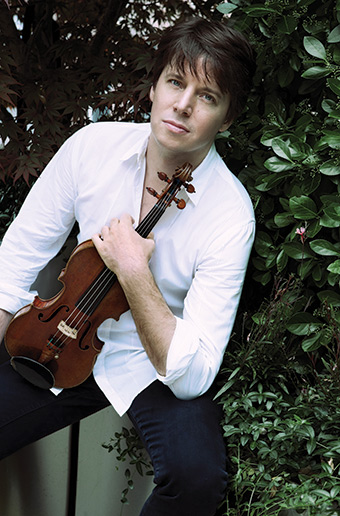Next story: Round 4, Week 4: Canary Girls vs. Black Belt Jones Trio
Joshua Bell Plays Beethoven
by Jan Jezioro

Max Valdés returns to lead the BPO in a special concert
This Saturday evening, March 24 at 8pm, the Buffalo Philharmonic Orchestra plays host to a very special event in its home in Kleinhans Music Hall, when its popular former music director Maximiano Valdés returns to the podium to lead the orchestra in a program featuring superstar American violinist Joshua Bell.
Many longtime BPO patrons have a special place in their affections for Max Valdés, and eagerly look forward to his all too infrequent return visits. Valdés served as BPO music director for nine seasons through the spring of 1998, and he is now the music director and principal conductor of the Puerto Rico Symphony and artistic director of the famed Festival Casals in San Juan. He recently ended his 16-year tenure as music director of the Orquesta Sinfonica del Principado de Asturias in Spain and was named the orchestra’s conductor laureate.
Valdés will open the concert with the rousing Overture to Rienzi, from the opera that was Richard Wagner’s first major success, and a work that last appeared on a BPO classic series concert in 1981, under the baton of another former BPO music director Julius Rudel. Also on the program is the über-romantic Symphony No. 4 in D Minor, by Robert Schumann, one of touchstones of the 19th-century Romantic Movement in music. After intermission, Joshua Bell will take center stage as soloist in Beethoven’s Violin Concerto in D Major.
Born in Bloomington, Indiana in 1967, violinist Joshua Bell first gained national attention at the age of 14, when he debuted with the Philadelphia Orchestra under the baton of Riccardo Muti. His Carnegie Hall debut soon followed, as did a major label recording contract, the first of several that allowed him to record over three dozen critically acclaimed CDs. Bell has been described as a poet of the violin, and he is widely praised for the purity of his tone, produced on his instrument of choice, the 1713 Gibson, ex-Huberman Stradivarius violin, using a late18th-century French bow by the renowned bow maker Francois Tourte. The history of Bell’s violin is a story in itself, as it was stolen from Carnegie Hall in the 1930s and only recovered when the thief made a death-bed confession in the 1980s.
A recipient of the Avery Fisher Prize, Bell has appeared with virtually every major American and European orchestra. He was named 2010 Instrumentalist of the Year by Musical America, and he is an inductee in the Hollywood Bowl Hall of Fame. He is recognized as a young global leader by the World Economic Forum, and he serves on the artist committee of the Kennedy Center Honors and on the board of directors of the New York Philharmonic. Recently named music director of the legendary British chamber music group, the Academy of St. Martin in the Fields, Bell is the first person to hold this post since Sir Neville Marriner formed the orchestra in 1958, and he will lead the Academy this year on a 15-city American tour.
Bell is equally at home as a soloist, chamber musician, orchestra leader, and composer, and he performs his own cadenzas to several of the major concertos in the repertoire, a practice that he first began more than 20 years ago with the Brahms Concerto.
Beethoven left no cadenza for his Concerto for Violin, a work that critical opinion agrees is the single greatest concerto written for the instrument. At the end of the 19th century and the beginning of the 20th century, the cadenza written by the virtuoso Hungarian violinist Joseph Joachim was most often played. Fritz Kreisler composed his own cadenza for the work while still in his teens, and that cadenza eventually surpassed Joachim’s in popularity, and it remains the most often performed version. While several other high-profile soloists, such as Leopold Auer, Adolph Busch, and Nathan Milstein, have also written their own cadenzas, it requires a high level of self-confidence in your own artistic abilities, even for an internationally acclaimed violinist, to compose and perform a new cadenza for the Beethoven concerto, rather than playing one of the popular, expected versions. Bell has been doing just that for over a decade to general critical acclaim.
There is also a special post-concert party, for an extra $75 per person, downstairs in Kleinhans Music Hall, when Henry’s Restaurant will be transformed into the Blue Room, complete with an open bar, desserts from Oliver’s, and the gypsy-jazz style of the Hot Club of Buffalo, featuring the members of Babik and Djambossa, where you will be able to dance the night away and mingle with the evening’s headlining performers.
For tickets and information call 885-5000 or visit www.bpo.org.
blog comments powered by Disqus|
Issue Navigation> Issue Index > v11n12 (week of Thursday, March 22) > Joshua Bell Plays Beethoven This Week's Issue • Artvoice Daily • Artvoice TV • Events Calendar • Classifieds |









 Current Issue
Current Issue